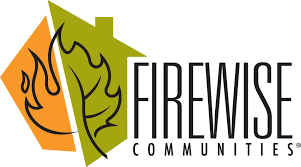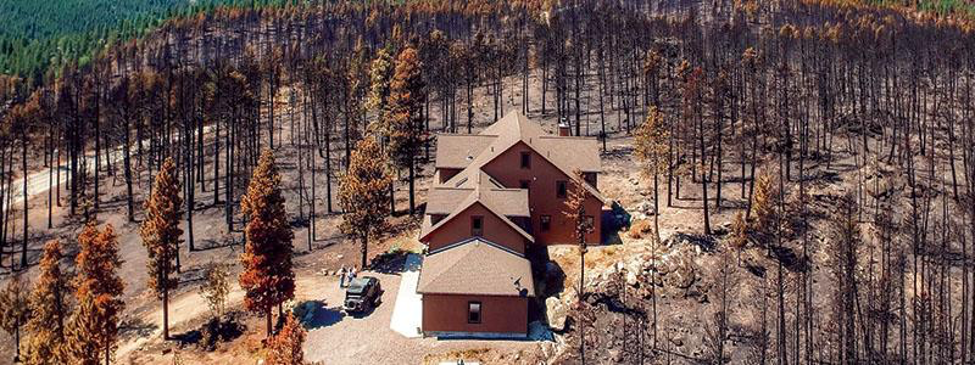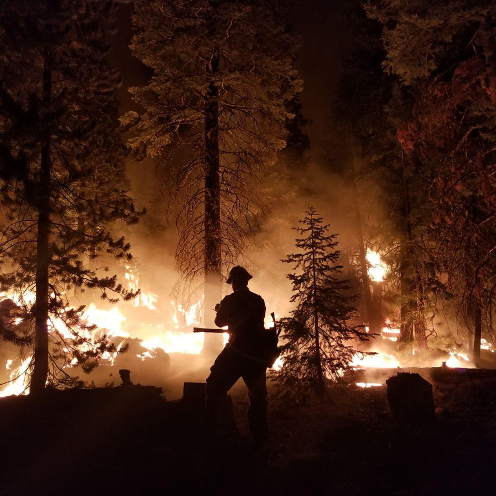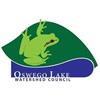What is Lake Oswego Forest Resiliency?
The idea of land resilience and community involvement requires a coupling of social and ecological resilience in rapidly changing landscapes affected by our warming climate. Land management is strongest when it adopts multiple perspectives of resilience. Resilient land that is actively managed using a systems based approach can respond to stress events (drought, extreme weather, fires, insect and pathogen invasions) while supporting wildlife populations, healthy soils, and healthy watersheds.
First Stewards
Indigenous peoples successfully cared for this land for millennia prior to European colonization and continue to do so today. The land that we now call Lake Oswego is the homeland of the Clackamas people and other native groups who relied on their natural environment and embedded knowledge of local ecosystems into their worldview, culture, food, craftsmanship and storytelling.
Tribes continue to use Traditional Ecological Knowledge (TEK), an on-going accumulation of practices that demonstrate relationships between living beings including people in a specific ecosystem. The Indigenous use of fire has been a particularly important care-giving tool for maintaining a mosaic of habitat patches that supports forest health by ensuring a productive, biodiverse landscape.
Using charcoal analyses to reconstruct the character of the fire regimes that existed in Lake Oswego, Western researchers are finding out more about how indigenous peoples deliberately used fire to shape the land. Their methods of controlled burning to enhance ecosystem health required extensive knowledge of seasonality and vegetation response. Prescribed fire is often used to mimic the low-intensity fire that would have naturally occurred on the landscape creating a more fire resilient and adapted landscape.
Increased Wildfire Risk in a Changing Climate
Increased forest fire activity across the western United States has been enabled by a number of factors, one of the leading being the pattern of increasing temperatures, a key indicator of human-caused climate change. Prolonged drought and heat evaporate moisture from the soil and vegetation making forested areas more vulnerable to igniting. Wildfires are burning hotter and more frequently, and as urban populations continue to grow and create new rural boundaries, fire will become a large part of the changing landscape.
Many communities in Lake Oswego lie within the wildland-urban interface. Decades of deferred maintenance, tree damage and woody debris from the 2021 ice storms, combined with periods of prolonged drought, progressing climate change, and the buildup of invasive plant materials have created conditions conducive to wildfire risk.
Steep slopes, dense non-native vegetation, and the interface between wildland and urban areas present high risk for wildfires. A forested area that is mainly confined to steep slopes that are topped by the residential areas increases the likelihood that a wildfire could develop with catastrophic results to residences – a single cigarette or coal from a barbecue has the potential to start a catastrophic wildfire in these conditions.
Hazardous Fuel Reduction
Fuel reduction projects and manual vegetation treatments have been utilized as a means of reducing catastrophic wildfire risk in the urban-wildland interface. When understory vegetation accumulates and ladder fuels build up, they allow fires to burn, ignite and spread faster, leading to high intensity, high impact fires.
When fire encounters areas of continuous brush or small trees, especially non native vegetation, it can burn these “ladder fuels” and may quickly move from a ground fire into the treetops, creating crown fires. Mechanically thinning out these dense tree stands aims to mimic low-intensity fires that would have naturally occurred on the landscape while promoting healthy forest successional processes. This will ultimately preserve many mature, native trees from going up in flames in the event of an urban wildland fire and prevent wildfire from spreading to homes.

Small test plot where Mountain Park Home Owners Association (MPHOA) staff removed invasive shrubs and small trees, and replanted the area with fire resistant native species.
Firewise USA
The national Firewise USA® program provides a collaborative framework to help neighbors in a geographic area get organized, find direction, and take action to increase the ignition resistance of their homes and community and to reduce wildfire risks at the local level.
Forming a Firewise community is voluntary and led by residents, with support and resources from community partners including the Lake Oswego Fire Department and Oswego Lake Watershed Council.
Benefits of becoming a Firewise accredited community in Lake Oswego:
- A dedicated space where homeowners can voice their concerns and ideas
- Attainable framework for creating defensible spaces
- Access to checklists for easy, routine tasks to make homes more resistant to ignition in the case of a wildfire.
- Endorsed by Lake Oswego Fire Department who will provide site assessments and recommendations
- FEMA Grants and other funding opportunities for long term wildfire hazard mitigation
- Utilizes community partnerships
- Provides educational material and ongoing research
- Brings community together over a common goal
- Serves as an example for other neighborhoods in Lake Oswego



“We make instant decisions in our efforts to protect homes during a wildfire based on what looks to be defensible; take the Firewise Prevention steps today to make sure you are ready for tomorrow.”
—Chief Don Johnson, Lake Oswego Fire Department
Resources for Lake Oswego Residents
Lake Oswego Fire Department
The Lake Oswego Fire Department has resources on their website that provide more information on home fuel reduction zones and defensible space and seasonal maintenance guidelines and checklist tasks to routinely address those fuel reduction zones.
Sign up for a Wildland-Urban Interface Home Assessment
The Lake Oswego Fire Department also offers assessments for homes in the Wildland-Urban Interface (WUI). Assessments focus on the home ignition zone and provide recommendations on ways to eliminate the fire’s potential relationship with the house. You can sign up here.
Firewise USA®: The national Firewise USA® recognition program provides a collaborative framework to help neighbors in a geographic area get organized, find direction, and take action to increase the ignition resistance of their homes and community and to reduce wildfire risks at the local level.
Click here to learn more about the Firewise USA® Program.


